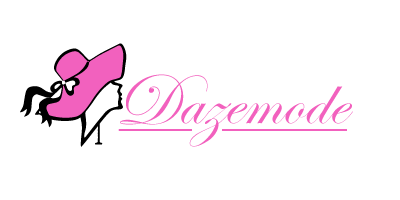Introduction: A Personal Transformation
Emma had always struggled with acne. Throughout her teenage years and well into adulthood, she tried countless over-the-counter products, hoping to find a solution. One day, after a particularly harsh breakout, Emma sought professional help. She visited a dermatologist who recommended a series of beauty treatments, including chemical peels and laser therapy. Sceptical but desperate, Emma followed the advice. After a few sessions, she noticed a significant improvement in her skin’s texture and clarity. Emma’s confidence soared as her skin cleared up, and she finally felt comfortable. Her story is just one example of how beauty treatments can transform lives. This article explores beauty treatments’ evolution, types, and impact, supported by statistics and expert insights.
The Evolution of Beauty Treatments
From ancient practices to modern-day innovations, beauty treatments have come a long way. In ancient Egypt, women used natural ingredients like honey and milk for skin care routines. Cleopatra, known for her beauty, was said to bathe in milk to maintain her youthful appearance. Fast forward to the 20th century, and beauty treatments began incorporating scientific advancements and technology. The introduction of Botox in the 1980s revolutionized the cosmetic industry, offering a non-surgical solution for reducing wrinkles.
Today, the beauty industry is multi-billion-dollar, with various treatments available to address multiple skin concerns. According to the Global Wellness Institute, the global wellness economy, which includes beauty and anti-ageing, was valued at $4.5 trillion in 2018, highlighting the growing demand for beauty treatments.
Types of Beauty Treatments
- Facial Treatments
Facial treatments are among the most popular beauty treatments. They range from basic facials to advanced procedures like chemical peels and microdermabrasion. According to the American Society of Plastic Surgeons (ASPS), over 1.3 million chemical peel procedures were performed in the United States in 2020. These treatments help exfoliate the skin, reduce acne scars, and promote a brighter complexion.
- Laser Treatments
Laser treatments use focused light to target specific skin concerns. They can treat various issues, including acne scars, pigmentation, and unwanted hair. The ASPS reported that over 200,000 laser skin resurfacing procedures were performed in the US in 2020. Laser hair removal is also popular, with nearly 760,000 procedures conducted in the same year.
- Injectables
Injectable treatments, such as Botox and dermal fillers, have become mainstream for reducing wrinkles and restoring face volume. The American Academy of Facial Plastic and Reconstructive Surgery (AAFPRS) found that Botox injections were the most performed non-surgical procedure in 2020, with millions of treatments administered globally.
- Body Contouring
Body contouring treatments, such as CoolSculpting and liposuction, target stubborn fat deposits resistant to diet and exercise. According to the International Society of Aesthetic Plastic Surgery (ISAPS), liposuction was the most popular cosmetic surgery worldwide in 2019, with over 1.7 million procedures.
- Skin Rejuvenation
Skin rejuvenation treatments, including microneedling and radiofrequency therapy, stimulate collagen production and improve skin elasticity. These treatments are gaining popularity for addressing ageing concerns without invasive surgery. The ASPS noted a significant increase in microneedling procedures, with over 200,000 treatments performed in the US in 2020.
The Psychological Impact of Beauty Treatments
Beyond the physical benefits, beauty treatments can have a profound psychological impact. A study published in “Dermatologic Surgery” found that cosmetic treatment patients reported increased self-esteem and a higher quality of life. This is particularly true for individuals who have struggled with skin issues for years, like Emma.
A board-certified dermatologist, Dr. Diane Madfes, explains, “Beauty treatments can significantly boost self-confidence. When people feel good about their appearance, it positively impacts their overall well-being and mental health.”
Statistics and Trends
The beauty industry continues to grow, driven by technological advancements and an increasing focus on self-care. According to a report by Grand View Research, the global medical spa market size was valued at $13.82 billion in 2019 and is expected to grow at a compound annual growth rate (CAGR) of 13.8% from 2020 to 2027. This growth is attributed to the rising demand for non-invasive procedures and the popularity of wellness tourism.
Furthermore, a survey conducted by RealSelf, an online community for learning and sharing information about cosmetic treatments, revealed that 73% of respondents considered a cosmetic treatment in the next year. This indicates a growing acceptance and interest in beauty treatments across various age groups.
Health and Safety Considerations
While beauty treatments offer numerous benefits, it is essential to prioritize health and safety. The American Academy of Dermatology (AAD) advises choosing qualified and experienced practitioners to minimize the risk of complications. Understanding the potential side effects and recovery times is crucial for making informed decisions.
Conclusion: Embracing Modern Beauty Treatments
Emma’s journey underscores the transformative power of beauty treatments. From ancient rituals to cutting-edge technologies, the evolution of beauty treatments reflects our enduring desire to look and feel our best. As the industry continues to innovate, more individuals will have access to treatments that enhance their appearance and boost their confidence.
By understanding the different types of beauty treatments and their impact, individuals can make informed choices that align with their aesthetic goals and health considerations. Whether it’s a facial, laser, or injectable, the right beauty treatment can be a powerful tool for self-improvement and empowerment.
